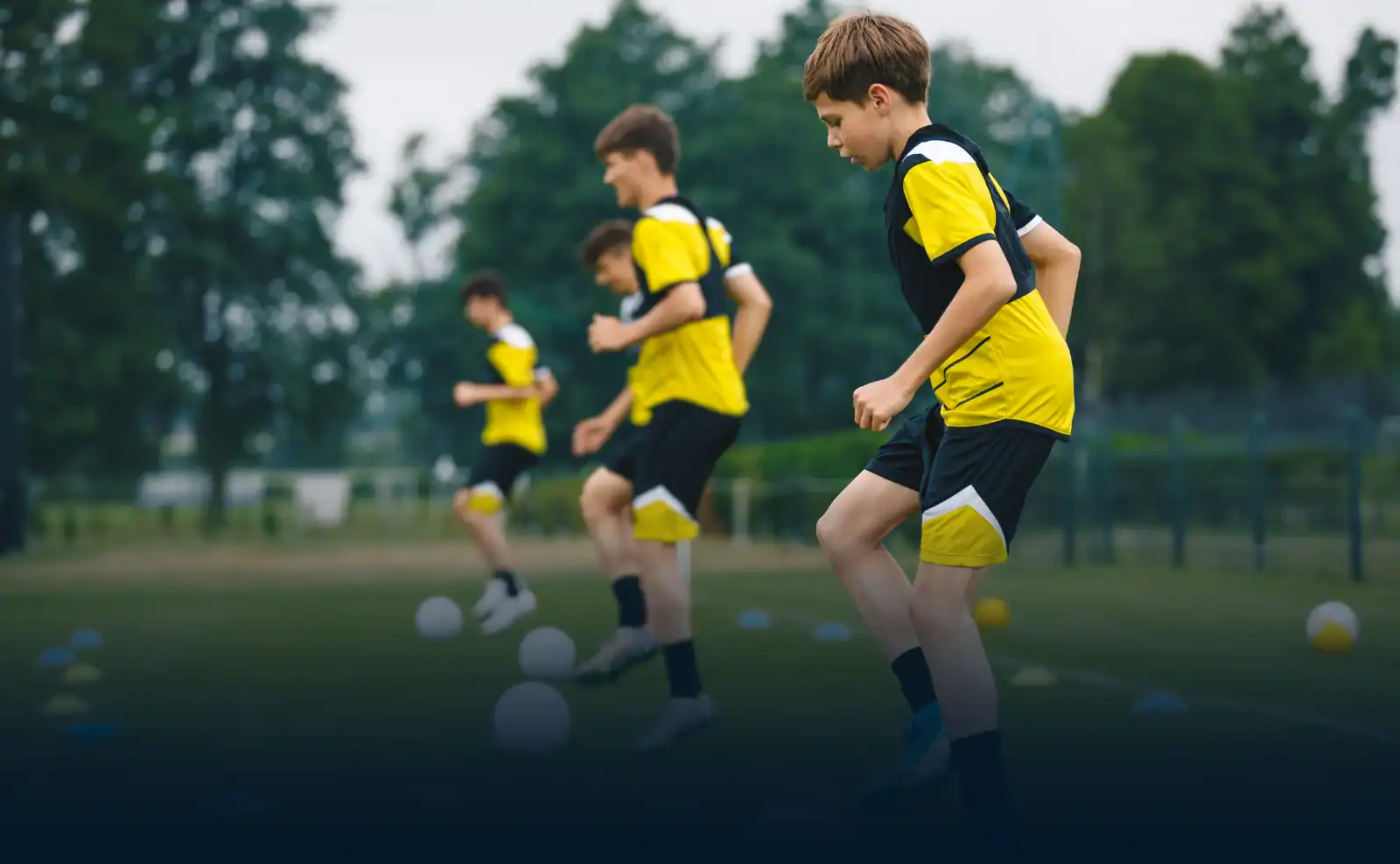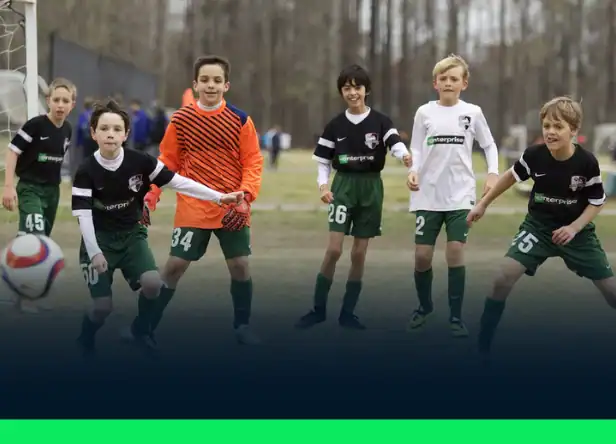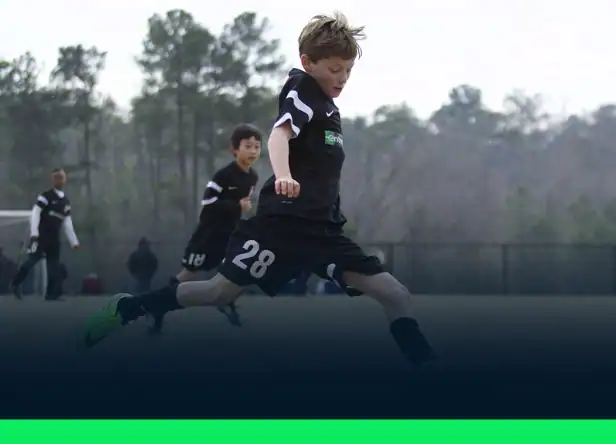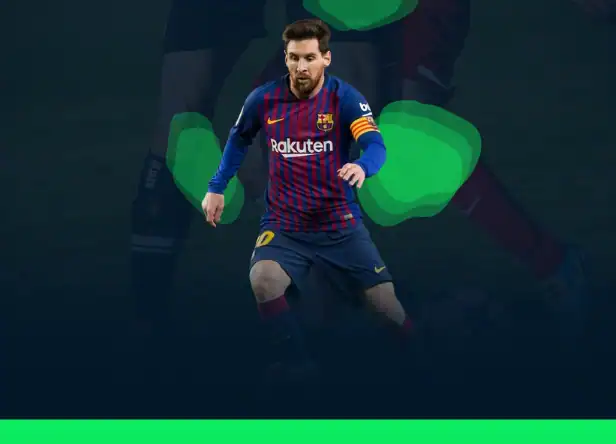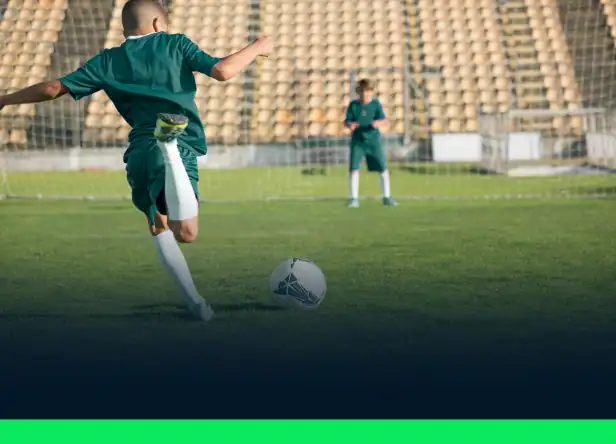Having a thorough knowledge of soccer drills is vital for creating well-rounded players whether you are an experienced coach or just starting your coaching path. Effective training sessions, in our opinion at SoccerEdu, integrate technical ability improvement with strategic awareness and physical conditioning. From elementary fundamentals to advanced training techniques, this manual of soccer practice drills will arm you with all you need to know about soccer training drills.
What are the Best Soccer Drills?
There are multiple soccer training drills that are necessary to level up the skills and the game in terms of both individual advancement and team success. Let’s get into the details of these soccer drills.
Technical soccer drills: Technical drills form the backbone of any successful training program. These soccer practice drills focus on developing individual skills that every player needs to master.
Ball Control and First Touch SoccerDrills
- Cone Wave Drill: Players dribble through a cone series while concentrating on maintaining control and keeping the ball close. This drill cultivates ball mastery and near control under duress.
- Juggling Progression: Starting with kick-and-catch drills, participants progressively advance to ongoing juggling. This basic ability enhances confidence, coordination, and ball control.
- Wall Training: Using a wall as their training partner, players work on various touches—inside foot, outside foot, and instep—to grow reliable ball control.
Passing and Receiving Soccer Training Drills
- Pass and Shuffle Pairs: Two players pass back and forth while shuffling side to side, building first touch and close ball control.
- Triangle Passing: Three players make a triangle and pass in order stressing accuracy and timing.
- One-Touch Passing: Players have to pass right away after getting the ball, therefore enhancing reaction time and ball control under pressure.
How to Improve Your Finishing in Soccer? Shooting and Finishing Drills

Scoring goals is the ultimate objective in soccer, making shooting drills one of the most important soccer practice drills for any training session.
Basic Shooting Drills
- 1, 2 Shoot: Players pass to a designated player who lays the ball off for a first-time shot. This drill emphasizes quick finishing and accurate striking.
- Wall Pass Shooting: Players play a wall pass with a teammate before shooting, combining passing and finishing skills.
- Shooting Challenge: Set up targets in different corners of the goal to improve shooting accuracy and power.
Advanced Finishing Drills
- Three-Goal Drill: This Chelsea academy-inspired drill involves two small goals with defenders and one full-size goal, teaching players to recognize and exploit different scoring opportunities.
- Shooting from Different Angles: Players practice shooting from various positions around the penalty area, developing the ability to finish from any angle.
Dribbling and Ball Mastery

Dribbling skills allow players to maintain possession and create opportunities in tight spaces which eventually leads to better attacking display, better midfield chemistry, defending while managing counter attacks, etc.
Individual Dribbling Drills
- Figure 8 Drill: Players use various parts of their feet to dribble around cones put in a figure eight arrangement.
- Cone Dribbling: Set cones in a line and have players dribble through them, paying emphasis on speed and maintenance control.
- Inside and Outside Foot Dribbling: Developing ambidextrous ball control, players switch between inside and outside foot touches as they advance.
Advanced Dribbling Techniques
- Ronaldinho Drill: This classic soccer practice drills combines ball mastery with instinctual movement, helping players develop natural dribbling skills.
- 1v1 Dribbling Games: Create small grids where players face off one-on-one, encouraging creative dribbling and defensive skills.
Age-Appropriate Soccer Practice Drills

Youth Soccer Training Drills for Beginners: Drills for youth soccer should prioritize fun while developing fundamental skills.
Fun Learning Games
- Red Light, Green Light: Players go across the field, stopping when called and altering their speed according to instructions. This exercise improves ball control and listening ability.
- Sharks and Minnows: In this soccer drill, one player (shark) attempts to steal balls from other players (minnows) as they dribble across the pitch. This game instructs defensive awareness and dribbling under duress.
- Hit the Coach: Players attempt to hit the coach’s legs from within a predetermined area, therefore enhancing ball control and accuracy.
Basic Skill Development
Space Wars is a fun drill where players dribble and shoot at a moving target (the coach), developing dribbling and shooting skills. Knockout is another kind of skill development drill in which players protect their own ball while trying to knock out opponents’ balls, teaching ball protection and awareness.
Intermediate Soccer Practice Drills
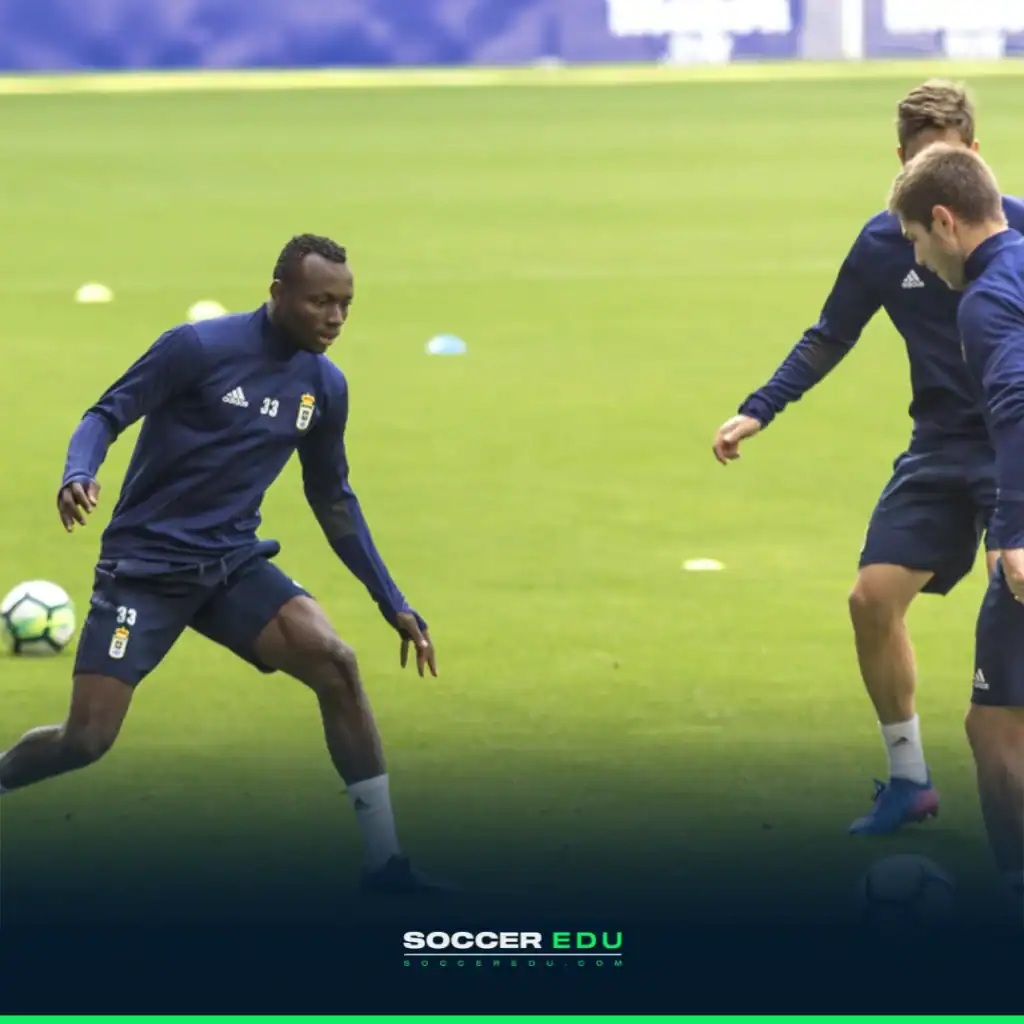
As players develop, soccer practice drills should become more complex and game-like.
Combination Soccer Drills
These drills are a combination of multiple aspects of the game to prepare the player for managing different situations in an instant while playing a real game. In Pass, Dribble, Shoot – Players receive a pass, dribble around a cone, and shoot on goal, combining multiple skills in one exercise. The tactical soccer drill of Dribbling-Passing-Shooting teaches players to maintain ball control while looking for passing opportunities.
Small-Sided Games
In soccer training drills, sometimes a small game is played between the players for competitive practice. For example, in a 4v4 Touch the Line, Teams compete to maintain possession, with the added challenge that losing possession requires touching the end line before rejoining play.
In Rondo Variations, From basic 4v2 to more complex 6v3 setups, these possession games develop passing, receiving, and decision-making skills.
Advanced Soccer Drills

Advanced players need soccer drills that simulate high-pressure game situations so that it reflects a real match environment. The drills below help in achieving that environment for the players in practice.
Tactical Soccer Training Drills
Transition Drills are considered very effective in which players practice quick switches from defense to attack, emphasizing speed and decision-making. High Line Pressure is a defensive approach where teams work on maintaining a high defensive line while putting pressure on opponents. Crossing and Finishing drills are important too as players practice crossing from different areas of the field while teammates make runs to specific zones in the penalty area which helps them gain set piece advantages.
Technical Refinement
Advanced Ball Mastery is a bunch of complex footwork patterns and skill combinations that challenge even experienced players to develop their technical skills. Pressure Passing exercises and drills with active and real defenders are used in training sessions to simulate match conditions and give the players a real game experience.
Physical Conditioning Through Soccer Drills
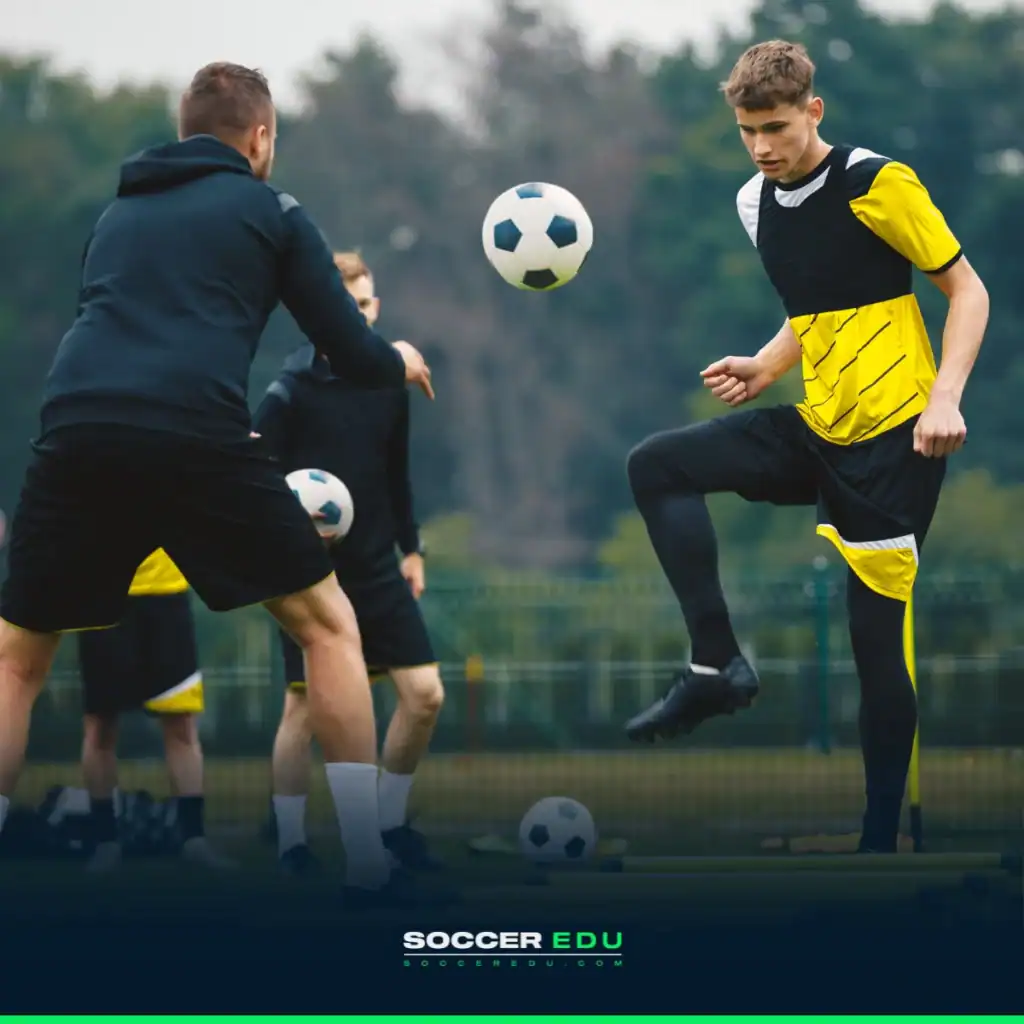
Soccer Conditioning Drills: Physical fitness is crucial for soccer performance, and soccer conditioning drills should target all energy systems.
Aerobic Conditioning
- 3-on-3 Force Marking: Players compete in small-sided games where they must stay with their assigned opponent, building endurance through game-like activities.
- Interval Running with Ball: Players perform timed running exercises while maintaining ball control.
Anaerobic Power Development
- Pain Shuttles: Sprint-based exercises using cones placed 5 yards apart that might make it painful if done throughout a period. Once practiced, it helps in developing explosive power.
- Plyometric Soccer Training Drills: Jumping lunges, broad jumps, and lateral jumps to build explosive muscle strength for consistently performing through a session that helps in real games.
Alactic System Training
- Short Sprint Intervals: Brief, high-intensity sprints with full recovery between repetitions, this recovery period helps in regaining energy.
- Agility Ladder Drills: Quick feet exercises that develop coordination and speed that eventually builds chemistry on the field between teammates.
What Workout is Best For Soccer? Strength and Conditioning Integration
Modern soccer requires players to be physically robust while maintaining technical skills as it is very important throughout the playing season.
Strength Training Exercises
- Box Jumps: Enhance lower body power and explosiveness in the player.
- Deadlifts: Improve overall strength and power for physical duels during a real game.
- Lunges: Build leg strength and balance which is essential for soccer movements, be it for attack, or defence.
Agility and Speed Work
- Cone Weaving: Develop change of direction abilities in the player so the player gets comfortable in changing the direction of the ball at the last moment.
- Ladder Drills: Improve foot speed and coordination as the player uses the ladder to climb.
- Sprint Variations: Forward, backward, and lateral running to simulate game movements
Tactical Soccer Drills
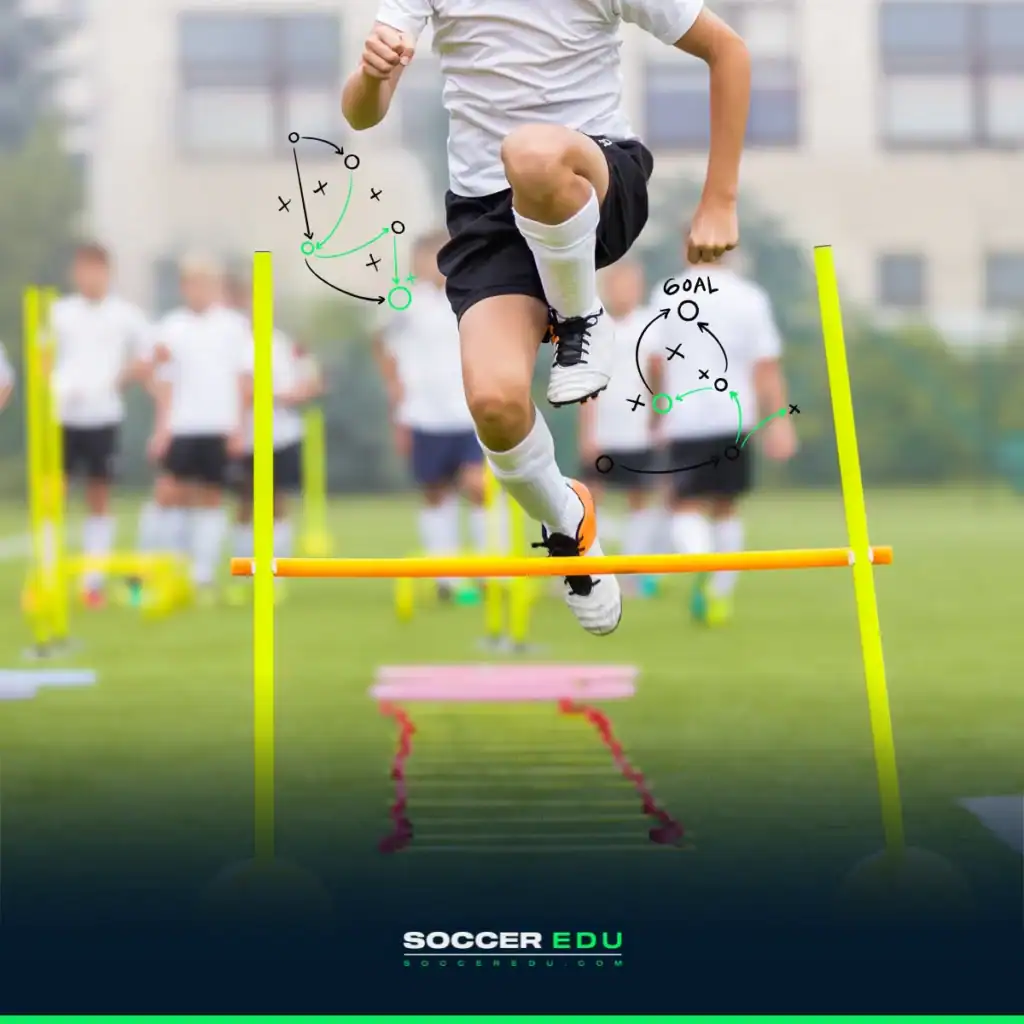
Positional Play Drills: Understanding tactical concepts is essential for any player development.
Defensive Drills
- 2v1 Defending: Players learn to defend when outnumbered, it helps in communication and positioning.
- Compact Defense: Teams practice staying close together and protecting the goal area.
- High Pressing: Coordinated team pressing to win the ball in the opponent’s half, as players quickly chase the ball if it’s in opponents position.
Attacking Soccer Drills
- Counter-Attacking: Counter-attacking emphasizes speed and straight play with a rapid shift from defense to offense.
- Build-up Play: Arranged passing patterns starting at the back which opens attacking chances.
- Crossing and Finishing: Coordinated attacks involving wide players and central strikers.
Game Situation Drills
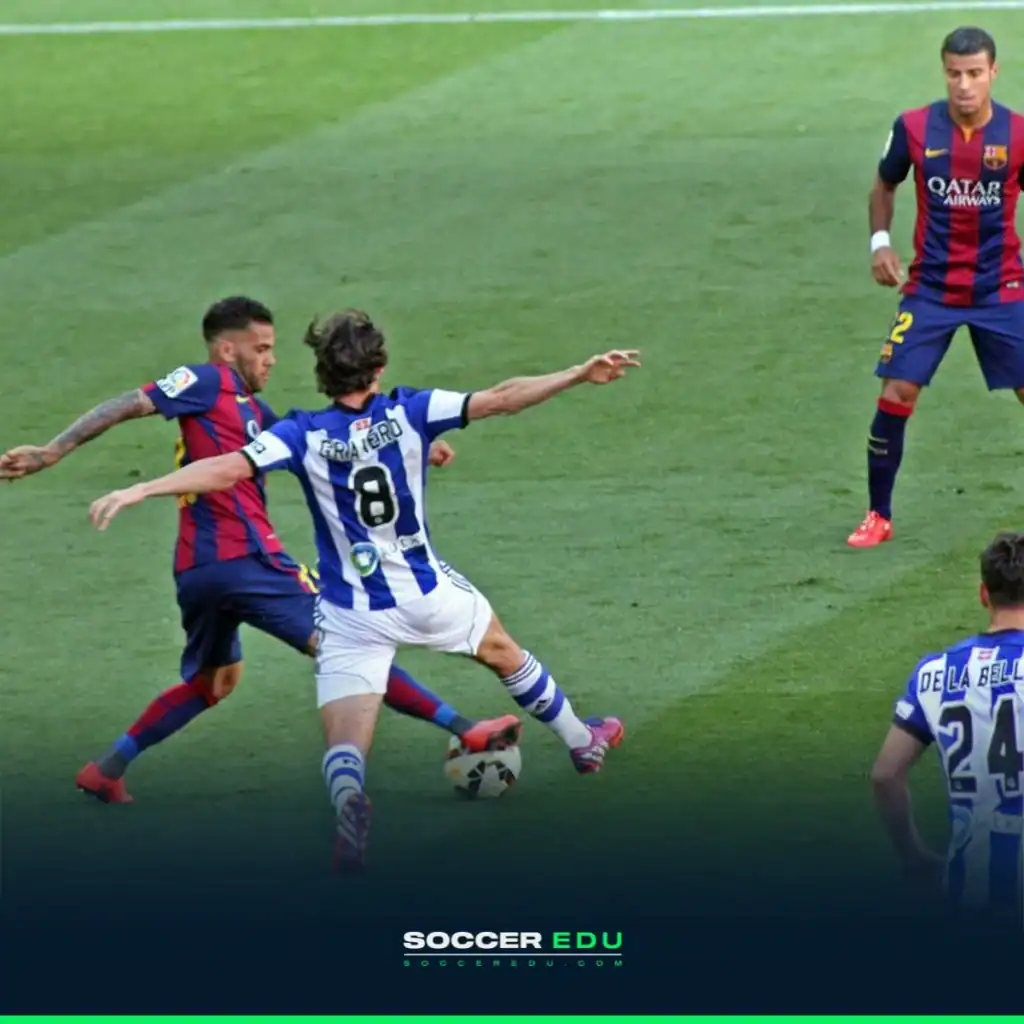
These soccer training drills replicate specific match scenarios to help the player prepare for what might happen.
Set Piece Practice
- Free Kick Situations: Practice both attacking and defending free kicks.
- Corner Kick Variations: Multiple attacking and defensive corner kick scenarios.
Transition Moments
- Turnover Drills: Immediate reactions to winning or losing possession.
- Counter-Attack Scenarios: Rapid movement from defense to attack.
Warm-Up and Cool-Down Protocols
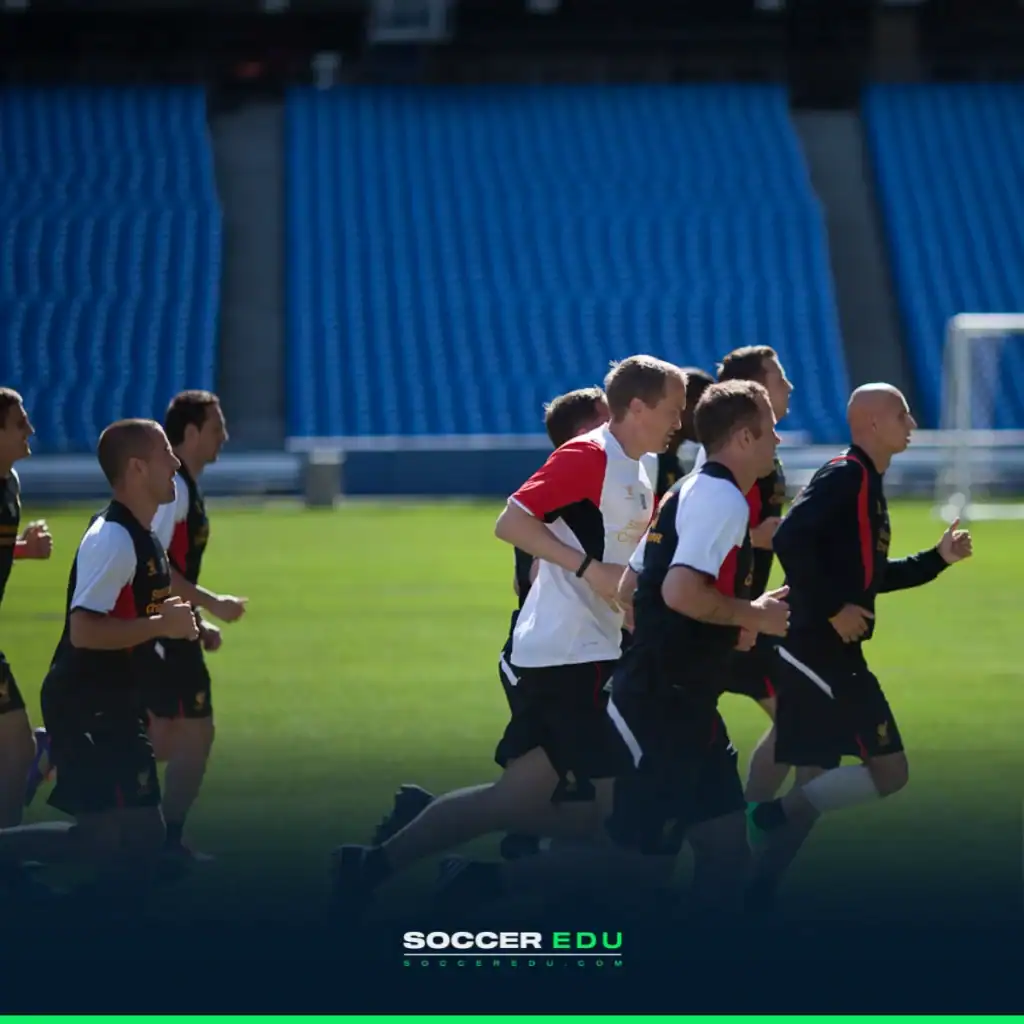
Effective Soccer Warm-Up Drills: Proper warm-up routines prevent injuries and prepare players for training.
Dynamic Warm-Up Sequence
Light Jogging is one of the basic activities to warm-up where five to ten minutes of progressive cardio activity. Dynamic stretching includes leg swings, arm circles, and walking lunges. And finally Ball Work which uses soccer balls in warm-up programs to increase touch count and interaction.
Sport-Specific Movements
Passing and Moving is one of the basic but important movements in Soccer. Simple passing exercises that gradually increase in intensity to make the player work hard are needed in training sessions. Dribbling at Pace: Progressive dribbling exercises that prepare players for training intensity while maintaining control.
Cool-Down and Recovery
Post-training recovery is as important as the training itself. Without this session, the player/trainee might get injured due to lack of recovery period. Some of the most useful recovery exercises are mentioned below.
Active Recovery
- Light Jogging: Gradual reduction in intensity while jogging, it helps the player to reduce fatigue.
- Static Stretching: Hold stretches for 25-35 seconds to improve flexibility and eliminate chances of sudden cramps.
- Mobility Work: Gentle movements to maintain range of motion and helps in keeping the muscle active.
Implementing Soccer Drills in Training Sessions
Session Structure
Effective training sessions follow a logical progression to eliminate any chances of any untimely injury due to over activity, gradually increasing the intensity to level up the skills, and maintain discipline. The different kinds of sessions that follow each other in a manner that should benefit the players eventually in proper structure is necessary for leveling up the skills.
The Pre-Training session which lasts for 10-15 minutes includes 1)Dynamic warm-up, 2)Ball familiarization, 3)Light technical work. Following it, is the main part of the session which is the Main Training (lasts 60-75 minutes). Main training includes Technical skill development, Tactical work, Physical conditioning, and Real Game-like scenarios. At the end, the Post-Training (10-15 minutes) session includes Cool-down activities, Static stretching, and Recovery exercises.
Drill Selection Criteria
It’s very important to select the drills the perfectly fits the need of the session, players involved, intensity, etc. When choosing drills for your sessions, consider the following:
- Player age and ability level: Make sure your exercises fit your players’ developmental stage.
- Objective of training: match drills with particular objectives (technical, tactical, physical).
- Session Context: Determine if the session is for match readiness or for training.
- Equipment Available: Modify drills depending on available resources.
- Duration: Choose exercises that fit within your allotted time, in case there are any time limitations.
Progressive Overload
Slowly and steadily increase the soccer drill complexity and intensity to ensure continuous and smooth improvement in terms of both technical progression and physical progression. In Technical Progression, Start with unopposed practice, then add passive pressure to increase intensity, introduce active defenders, and create real game-like conditions.
In Physical Progression, increase duration of the session slowly, reduce rest periods when it becomes easier, add complexity in the soccer drills, and finally combine with other skills to practice on field vision when required.
Summary Table of Soccer Drills
Here is the summary table of the soccer drills we reviewed earlier, bringing together all the categories: Technical, Finishing, Dribbling, Young Players, Intermediate, Advanced, Physical, Tactical, Game Situations, Warm-up, and Recovery.
| Category | Example Drills | Objective |
|---|---|---|
| Technical | Cone Wave, Triangle Passing, Wall Training | Ball control, passing, first touch |
| Finishing | 1-2 Shoot, Shooting Challenge, 3-Goal Drill | Accuracy, power, timing |
| Dribbling | Figure 8, 1v1, Ronaldinho Drill | Ball handling, creativity, feints |
| Young players | Red Light Green Light, Knockout | Fun learning, game-based introduction |
| Intermediate | Pass-Dribble-Shoot, Rondo, 4v4 | Combination play, speed of execution |
| Advanced | High Press, Transition Drill, Pressure Pass | Game simulation, tactical awareness |
| Physical | Interval Runs, Ladder Drills, Plyo Jumps | Endurance, speed, explosiveness |
| Tactical | Build-up Play, Counter-Attack, Compact Def | Positioning, pressing, build-up play |
| Game situations | Free Kicks, Corners, Turnover Scenarios | Set pieces, transitions |
| Warm-up | Jogging, Dynamic Stretch, Ball Touch | Physical and mental preparation |
| Recovery | Stretching, Mobility, Light Jogging | Cool down, injury prevention |
Soccer Drills, in Conclusion
Learning soccer drills is a never-ending process needing perseverance, inventiveness, and flexibility. Understanding that every exercise helps to create whole players is the key to effective coaching. The fundamentals stay the same whether you are dealing with young novices or seasoned athletes: concentrate on quality over quantity, make training fun, and constantly link drills to game conditions.
Remember that soccer training ideas should change along with your athletes’ growth. What helps one group might need revision for another. Maintaining a learning environment where players may grow both independently and as a team is the most crucial factor.
At SoccerEDU, we’re committed to helping coaches build effective training sessions that develop skilled, confident, and intelligent players. The drills and methods outlined in this article reflect the approach we promote through our programs—structured, purposeful, and adaptable to all levels—so coaches are equipped to guide their teams to success both on and off the field.

